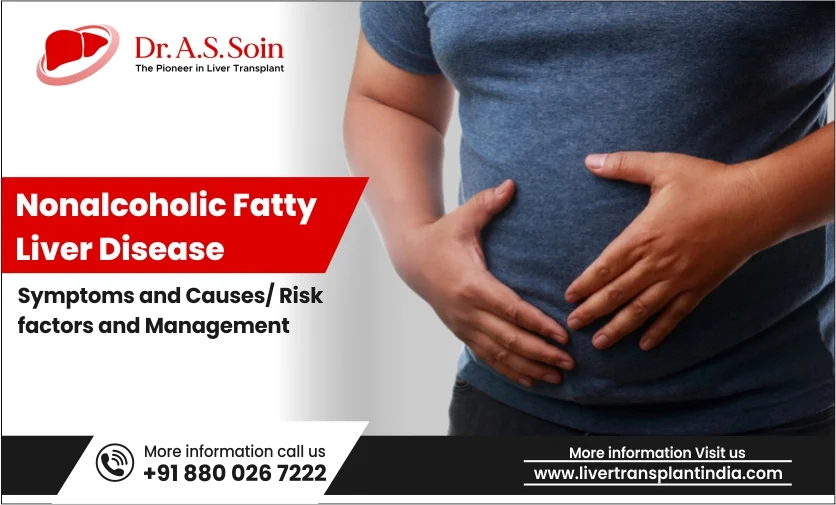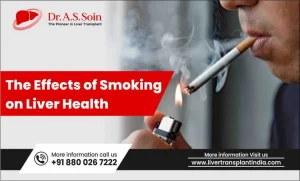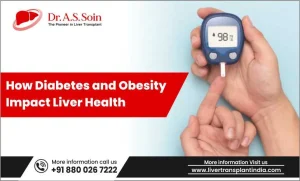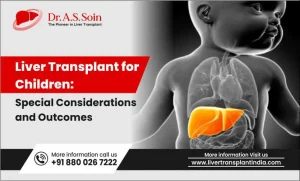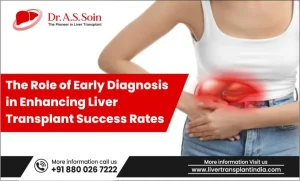The prevalence of NAFLD is increasing, now more so all over the world, particularly in countries where there are increased rates of obesity. It is the type of liver disease that is most prevalent worldwide.
Concerned about your liver’s condition? Or are you prepared to go forward in the direction of a healthy liver? Make an appointment with Dr. Soin today to learn about individualized treatment plans catered to your particular needs. You may feel secure knowing that you’re in safe hands with the best liver doctor Dr. Soin’s skill and kind treatment. Your path to liver health begins here, so don’t delay any longer.
Individuals who drink little to no alcohol are susceptible to a liver condition known as nonalcoholic fatty liver disease, or NAFLD for short. An overabundance of fat accumulates in the liver in NAFLD. Obese or overweight folks are the ones who experience it most frequently.
The severity of NAFLD varies, ranging from fatty liver, or hepatic steatosis, to nonalcoholic steatohepatitis (NASH), a more severe form of the illness.
Nonalcoholic fatty liver disease (NAFL) and nonalcoholic steatohepatitis (NASH) are the two forms of the condition.
NAFL
You have fat in your liver but minimal to no inflammation and little liver damage if you are diagnosed with NAFL. Due to liver enlargement, this ailment might hurt, although it usually doesn’t harm the liver.
NASH
A more severe kind of fatty liver disease associated with inflammation is called NASH. If you are given a NASH diagnosis, you probably also have fat and maybe even liver damage in addition to liver inflammation. This injury may result in liver scarring. If NASH is not treated, it may eventually result in cirrhosis, which can cause liver cirrhosis related complications called decompensations and even cancer if it is not addressed timely. This kind of harm is similar to the harm caused due to heavy alcohol consumption.
Table of Contents
ToggleNonalcoholic Fatty Liver Disease Symptoms
NAFLD typically exhibits no symptoms. When it does, fatty liver disease symptoms generally include:
- Feeling tired.
- Malaise, or not feeling well.
- Discomfort or pain in the upper right abdomen.
The following are potential signs of cirrhosis, or extensive scarring, and NASH:
Skin irritation.
Ascites, another name for abdominal swelling (fluid collection).
Breathlessness (may have fluid accumulated in the lungs)
Legs’ swelling.
Spider-like blood veins that are barely visible through the skin.
Larger spleen.
Palms red.
Jaundice (the yellowing of the skin and eyes)
What Causes Nonalcoholic Fatty Liver Disease
This question still has an unclear answer. However, experts believe that many variables are at play, such as:
- Metabolism Syndrome – A set of connected metabolic illnesses that include high blood lipid levels, high blood pressure, high body mass index, and diabetes appear to be associated with fatty liver disease. These elements appear to interact with one another and alter how your body stores fat and metabolizes nutrition.
- Nutritional Factors and Diet – Additionally, a diet heavy in fructose may raise your chance of getting fatty liver, according to research. One of the components of regular table sugar and the main component of high fructose corn syrup, a popular sweetener, is fructose. It has a strong connection to metabolic syndrome.
- Genetics. The development of fatty liver disease may be predisposed to certain genes. This might provide some insight into why some people develop it in the absence of the other prevalent risk factors. It could also help understand why some racial groups appear to acquire it more frequently.
Risk Factors for Nonalcoholic Fatty Liver Disease
Your chance of developing NAFLD can be raised by several illnesses and conditions, such as:
- Obesity or fatty liver disease in the family history
- Insufficient production of growth hormones in the body results in growth hormone deficit.
- Elevated cholesterol.
- Elevated blood triglyceride levels.
- Insulin resistance.
- Obesity, particularly when the bulk of the fat is around the waist.
- Polycystic ovary syndrome
- Obstructive sleep apnea
- Diabetes type 2.
- Hypothyroidism which is more commonly known as an underactive thyroid.
- Hypopituitarism, or underactivity of the pituitary gland.
These categories have higher odds of NASH:
- Those who are above 50.
- Those who have specific genetic risk factors.
- Those who are obese.
- Those who have high blood sugar or diabetes.
- Those who have high blood pressure, high triglycerides, and a big waist size—symptoms of metabolic syndrome.
NAFLD and NASH are difficult to distinguish from one another without a clinical assessment and testing.
Complications With NAFLD
Cirrhosis, or severe liver scarring, is the primary consequence of nonalcoholic fatty liver disease and NASH. Liver injury, such as that brought on by NASH inflammation, results in cirrhosis. The liver produces regions of scarring, also known as fibrosis, in an attempt to reduce inflammation. As the inflammation persists, the fibrosis expands and consumes more liver tissue.
If the scarring is not stopped, cirrhosis may result in:
- Ascites, an accumulation of fluid in the stomach region.
- Varices, or swollen veins in the esophagus, that have the potential to burst and hemorrhage.
- Hepatic encephalopathy is another term for confusion, drowsiness, and slurred speech.
- Hypersplenism, or an overactive spleen, can result in insufficient blood platelets.
- carcinoma of the liver.
- End-stage liver failure: this indicates that the liver is no longer functional.
Diagnosing Fatty Liver Disease
Since there are usually no fatty liver disease symptoms, it is frequently discovered by tests that indicate a liver issue but were performed for other purposes. For instance, elevated liver enzyme levels discovered during an annual physical examination may prompt further testing and the diagnosis of NAFLD.
The following tests are used to diagnose nonalcoholic fatty liver disease, rule out other illnesses, and assess the severity of liver damage:
Blood tests
- Complete blood count.
- Studies on iron that reflect the amount of iron in your blood and other cells.
- Tests for liver function and liver enzymes.
- Tests for hepatitis A, C, and other chronic viral hepatitis.
- Blood sugar when fasting.
- Haemoglobin A1C, a measure of blood sugar stability.
- Measuring blood fats, like cholesterol and triglycerides through Lipid profile.
Imaging Tests
Imaging procedures for diagnosing fatty liver disease include:
- The first test that’s frequently performed when liver illness is suspected is abdominal ultrasonography.
- scanning using computerized tomography (CT) or magnetic resonance imaging (MRI). While NASH and NAFLD cannot be distinguished by these tests, they are more effective in detecting mild liver fibrosis.
- A more recent kind of ultrasonography that gauges your liver’s stiffness is called transient elastography. Fibrosis or scarring is indicated by stiffness in the liver.
- MRI imaging and sound waves are combined in magnetic resonance elastography (MRI elastography) to produce an elastogram, or visual map, that illustrates the stiffness of bodily tissues.
- Liver Biopsy
Your doctor can recommend a liver biopsy if additional testing reveals indications of NASH or more severe liver disease, or if the results of your tests are not clear.
A liver biopsy involves taking a small sample of tissue from the liver. Typically, a needle is inserted into the liver through the abdominal wall. In a lab, the tissue sample is examined for indications of inflammation and scarring. The most accurate method of diagnosing NASH and determining the extent of liver damage is a liver biopsy. Your medical team will thoroughly discuss the risks and potential discomforts of a liver biopsy with you.
Fatty Liver Disease Treatments
While there aren’t many fatty liver disease treatments, losing weight is generally the first step in treating NAFLD. Consuming a balanced diet, controlling portion sizes, and exercising can help achieve this. Reduced body weight may help with various health issues that cause NAFLD.
Generally speaking, it is advised to lose at least 10% of your body weight. However, there are advantages to dropping even 3% to 5% of your beginning weight. For select individuals, weight-loss surgery or medication may work as other fatty liver disease treatments.
Preventing Fatty Liver Disease
Despite there not being specific fatty liver disease treatments, the risk of developing fatty liver can be reduced by taking the following preventative measures:
- Nutrition: Consume a diet rich in proteins as less of refined carbohydrates and excess fats
- Put a limit on portion sizes, alcohol, and sweets. Steer clear of sugary beverages such as soda, sweet tea, juices, and sports drinks. It is best to avoid or use alcohol sparingly as it might harm your liver.
- Retain a healthy weight. Work with your medical team to progressively reduce your weight if you are overweight or obese.
- Workout. Be active for the majority of the week. Get your doctor’s approval first, in case you don’t exercise regularly and are about to start now.
Takeaway
Nonalcoholic fatty liver disease, which is defined by the buildup of fat in the liver cells, can lead to complications if left untreated. Because the liver is a key component of our body’s metabolic and detoxifying functions, it is critical to our general well-being.
So if you looking for top-notch fatty liver disease treatments or seeking liver transplant services in India? Go no further than Liver Transplant India. Patients from all over the world may get cutting-edge treatment options and compassionate care from our committed staff, which is directed by the best liver doctor, Dr. Soin. Get in touch with us right now to find out more about our all-inclusive liver care services and to begin your journey back to health and vitality.

